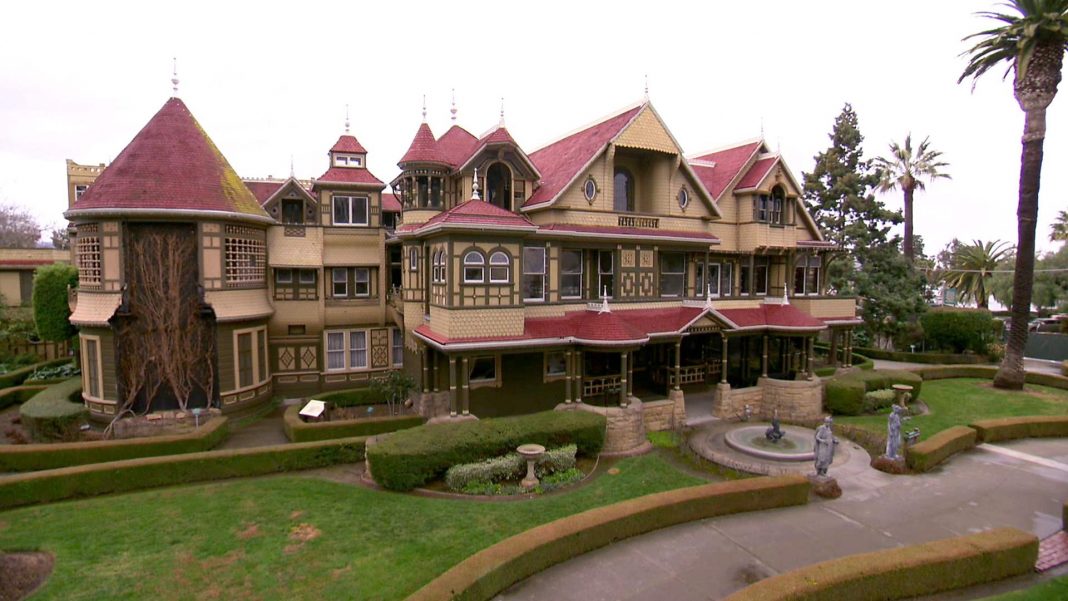

Amidst the maze of circulation, some doors open onto blank walls or, in other cases, onto prison bars in some rooms, cupboard doors function as the only means of entrance and egress. Stairways wind inexplicably: the so-called “goofy staircase” has 7 switchbacks, rising just 9 feet over 44 steps, while the “7-11 staircase” descends 7 steps to then rise 11. Hallways twist and turn on themselves, terminating in dead-ends. Winchester designed her sprawling villa to mislead the malicious spirits haunting her. Some numbers are less staggering: Winchester placed just 2 mirrors in the entire house, afraid that they served as portals to the world of the spirits. At one point in the building’s life there may have been up to 750 rooms to keep construction ongoing, however, demolition was just as important an endeavor as construction. The number 13 was a motif: 13 skylights illuminate the greenhouse, 13 palms announce the villa's presence to the street, the 13th bathroom displays 13 windows, and Winchester signed her will 13 times. Regardless, the numbers are staggering: in total, Winchester’s villa had 40 bedrooms, 6 kitchens, 3 elevators, 13 bathrooms, 47 fireplaces, 17 chimneys, 1,257 windows, and about 2,000 doors. Reports often claim that work continued around the clock for seven days a week without letting up, though other reports describe intermittent stoppages. Acting as architect, Winchester seemingly had no master plan beside the one-to keep building. The building was to be her salvation-her ticket to immortality.Īrmed with a $20 million inheritance, a 50 percent stake in the rifle company, and a misplaced sense of guilt, Winchester embarked on her building mission. Winchester was convinced that the only way to stave off such a fate was to continuously build, and that if construction ever stopped she would die. That rifle was an innovative, lever-action repeater whose reliability and less frequent need for reloading had made it possible for its owners to kill thousands by the 1880s it was later deemed “the gun that won the West.” Shooting victims would continue to haunt Winchester, the psychic explained, and would eventually claim her too, unless Winchester managed to house these lost souls. The psychic purportedly explained that the string of deaths had been caused by a curse placed on the family by the spirits of those killed by the Winchester rifle. Convinced that these events amounted to more than simple coincidence, Winchester visited a psychic in Boston for advice. Her only daughter, Annie, died a few weeks after her birth in 1866 her father-in-law, Oliver, died in 1880 and her husband, William Winchester, died in 1881 from tuberculosis. Winchester’s 38-year building frenzy emerged following a string of unfortunate events. By the time of her death 38 years later, the house was left unrecognizable: Winchester had added some 152 rooms to the house, creating a 24,000-square-foot, mat building-cum-labyrinth she rechristened Llanada Villa. In 1886, Sarah Winchester, heir to the Winchester Repeating Arms fortune, purchased an eight-room farmhouse in California’s Santa Clara Valley.


 0 kommentar(er)
0 kommentar(er)
